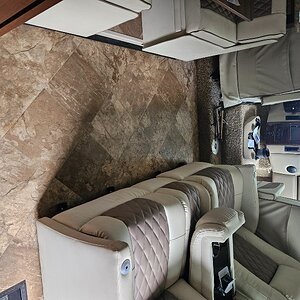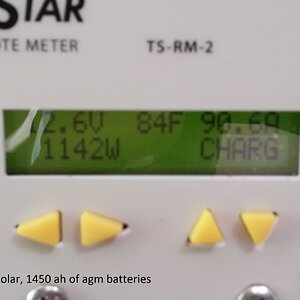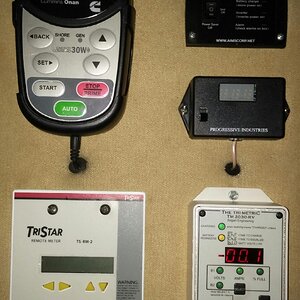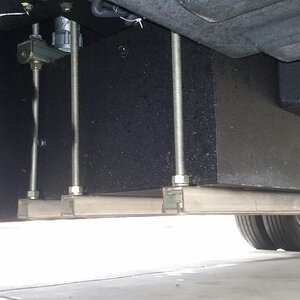In more detail:
most solar controllers have terminals with the following configuration.
Panel Battery Load
+ - + - + -
You can use The load terminals to limit how far down the battery can be drained to protect the battery. The problem is the load terminals can only supply 10 A. If you want to protect the battery with larger loads than 10 A this can be done using a relay. To be clear, you don't need to use this circuit, the idea is to keep the battery safe from going below 50%. The following circuit will work to allow larger than 10 A from the controllers load circuit:
+_____________ ____________Battery +
|| |
Load Coil \ Relay contact
| n.o. contact
-_____________| |_____________ Load RV system +
In all honesty I would prefer a solid state relay for this or a FET but that may be hard to find locally. Horn or head light relays can be found off shelf at any auto store They are limited to 40 A but that should be large enough to supply power to pump and lights, I don't know the demand of the furnace, and that is my largest concern when battery draw down is concerned. Most full time users get rid of furnace and use a radiant propane heater for this reason.
Side note:
Wyo... At the moment I am in Burns, OR. I am thinking of making my way home on the US191 Past Flaming gorge. You are in beautiful territory, I say that with envy as I was born and raised in the state.












